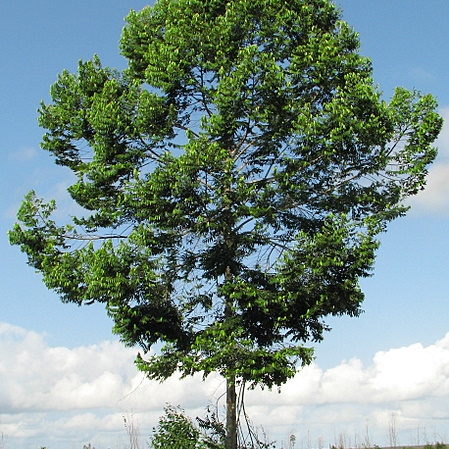A small tree. It grows 4-8 m high. The branches grow horizontal. The trunk is 20-30 cm across. The bark is almost smooth and is smooth and has a smell. The leaves are simple and alternate. They have short leaf stalks. The leaves are narrow and pointed and are 5-12 cm long by 1-2 cm wide. The flowers are in small groups in the axils of leaves. The fruit is a round red berry. There are 2-6 seeds inside.


